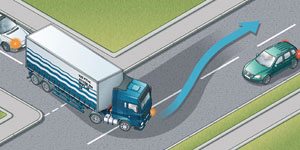These 27 questions from the DVSA revision question bank cover the behaviour of other types of vehicles on the road such as lorries and buses.

Difficulty level
The average score for this test is 92%. Can you beat that?
Rate this test
Total: 230 Average: 3.9